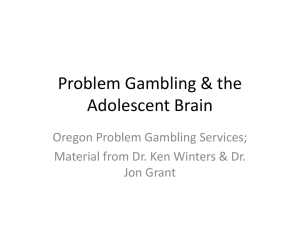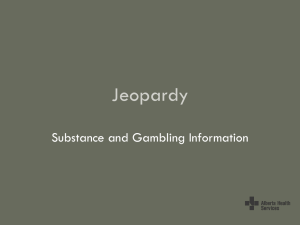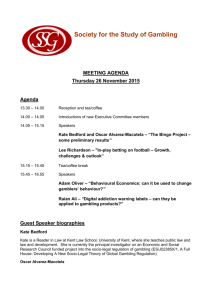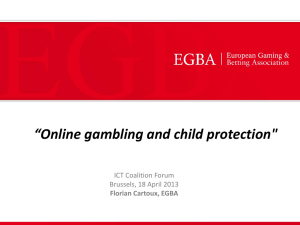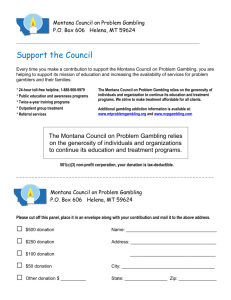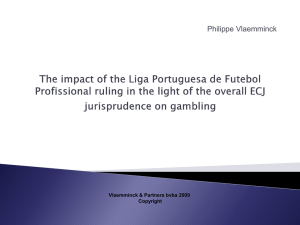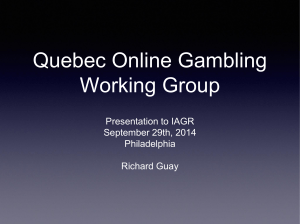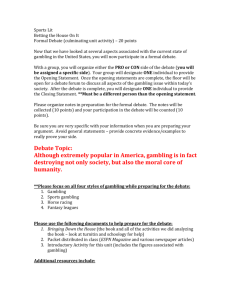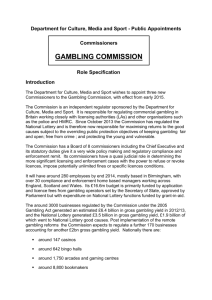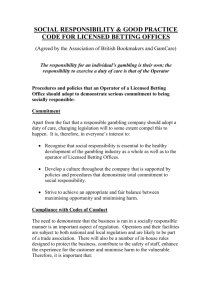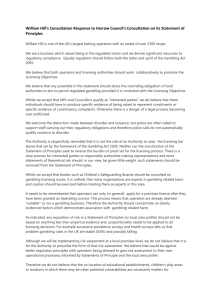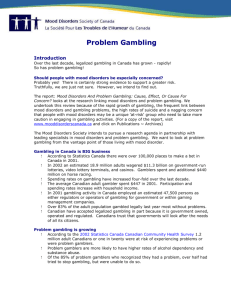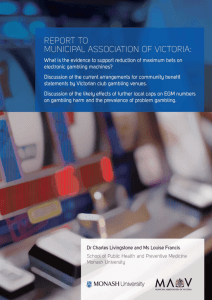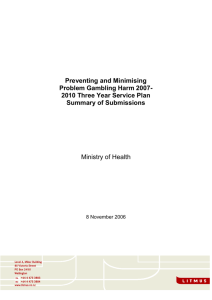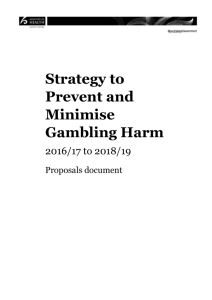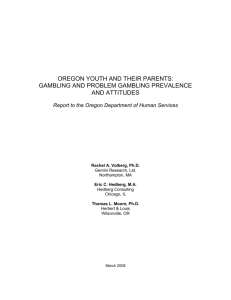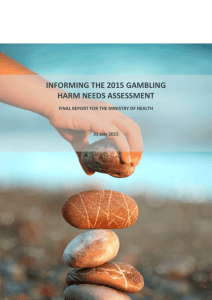Sample Gambling Free Event Policy
advertisement
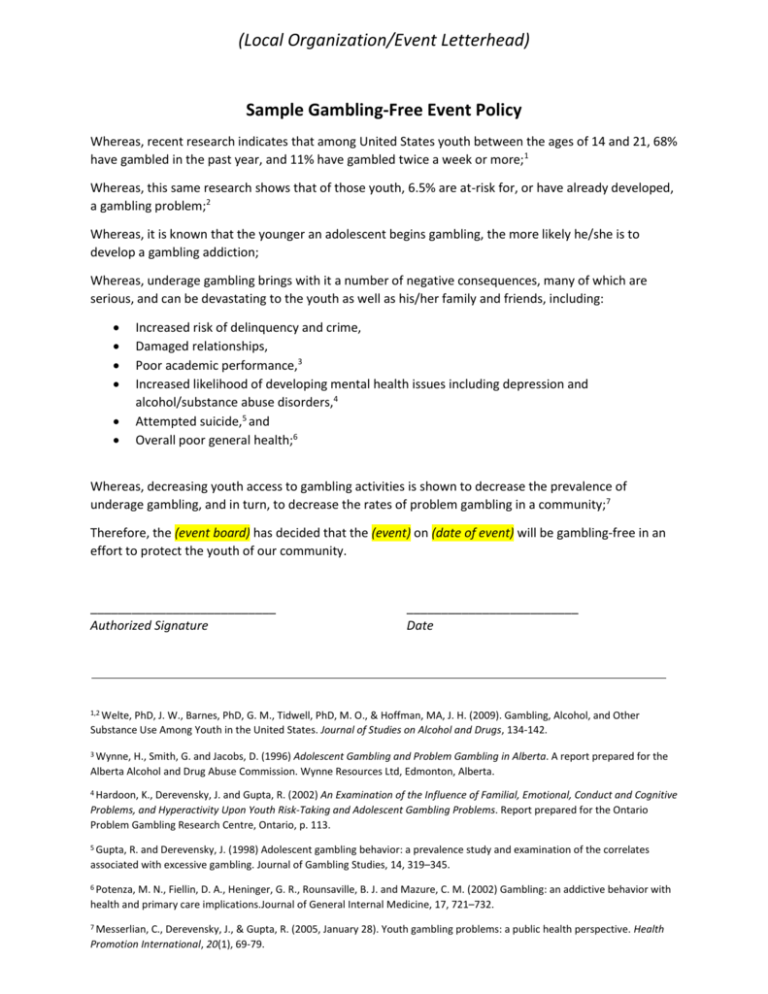
(Local Organization/Event Letterhead) Sample Gambling-Free Event Policy Whereas, recent research indicates that among United States youth between the ages of 14 and 21, 68% have gambled in the past year, and 11% have gambled twice a week or more;1 Whereas, this same research shows that of those youth, 6.5% are at-risk for, or have already developed, a gambling problem;2 Whereas, it is known that the younger an adolescent begins gambling, the more likely he/she is to develop a gambling addiction; Whereas, underage gambling brings with it a number of negative consequences, many of which are serious, and can be devastating to the youth as well as his/her family and friends, including: Increased risk of delinquency and crime, Damaged relationships, Poor academic performance,3 Increased likelihood of developing mental health issues including depression and alcohol/substance abuse disorders,4 Attempted suicide,5 and Overall poor general health;6 Whereas, decreasing youth access to gambling activities is shown to decrease the prevalence of underage gambling, and in turn, to decrease the rates of problem gambling in a community;7 Therefore, the (event board) has decided that the (event) on (date of event) will be gambling-free in an effort to protect the youth of our community. ___________________________ Authorized Signature _________________________ Date 1,2 Welte, PhD, J. W., Barnes, PhD, G. M., Tidwell, PhD, M. O., & Hoffman, MA, J. H. (2009). Gambling, Alcohol, and Other Substance Use Among Youth in the United States. Journal of Studies on Alcohol and Drugs, 134-142. 3 Wynne, H., Smith, G. and Jacobs, D. (1996) Adolescent Gambling and Problem Gambling in Alberta. A report prepared for the Alberta Alcohol and Drug Abuse Commission. Wynne Resources Ltd, Edmonton, Alberta. 4 Hardoon, K., Derevensky, J. and Gupta, R. (2002) An Examination of the Influence of Familial, Emotional, Conduct and Cognitive Problems, and Hyperactivity Upon Youth Risk-Taking and Adolescent Gambling Problems. Report prepared for the Ontario Problem Gambling Research Centre, Ontario, p. 113. 5 Gupta, R. and Derevensky, J. (1998) Adolescent gambling behavior: a prevalence study and examination of the correlates associated with excessive gambling. Journal of Gambling Studies, 14, 319–345. 6 Potenza, M. N., Fiellin, D. A., Heninger, G. R., Rounsaville, B. J. and Mazure, C. M. (2002) Gambling: an addictive behavior with health and primary care implications.Journal of General Internal Medicine, 17, 721–732. 7 Messerlian, C., Derevensky, J., & Gupta, R. (2005, January 28). Youth gambling problems: a public health perspective. Health Promotion International, 20(1), 69-79.
